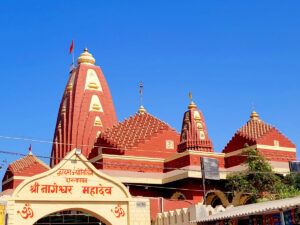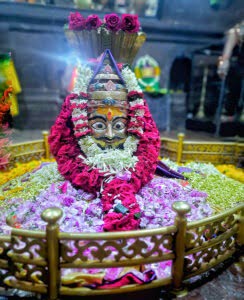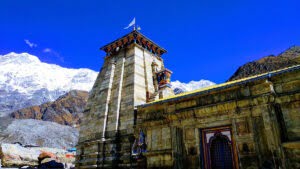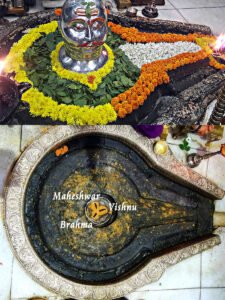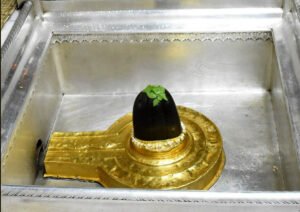Santaneshwor Mahadev Temple
The Santaneshwor Mahadev Temple is a Hindu temple dedicated to Lord Shiva located in Jharuwarasi, Lalitpur district, Nepal. It is situated on a hilltop at an elevation of 1400 meters, offering breathtaking views of the Kathmandu Valley and the surrounding villages.

Contents
- 1 Santaneshwor Mahadev Temple History:
- 2 Legend of Santaneshwor Mahadev Temple:
- 3 Significance of Santaneshwor Mahadev Temple:
- 4 Myths of Santaneshwor Mahadev Temple:
- 5 Here are the Complete details of 12 Jyotirlingas:
- 5.0.1 Nageshwar Jyotirlinga Dwaraka: 7th CE Temple with Divine Powers
- 5.0.2 Grishneshwar Temple: Wealth and Pleasure at Shiva’s Feet
- 5.0.3 Kedarnath Temple: Where Faith Meets Jyotirling & Char Dham Yatra
- 5.0.4 Trimbakeshwar Jyotirlinga Temple
- 5.0.5 Sacred Kashi Vishwanath Temple: 11th Jyotirling of Liberation
- 5.0.6 Aundha Nagnath Temple: 8th Jyothirling with Divine Serpents
- 6 Santaneshwor Mahadev Temple Architecture:
- 7 Places to visit near Santaneshwor Mahadev Temple:
- 8 FAQ:
- 8.0.1 What is the Santaneshwor Mahadev Temple famous for?
- 8.0.2 What is the significance of the temple name – Santaneshwor?
- 8.0.3 Is there any mention of the temple in Hindu scriptures?
- 8.0.4 Where is the temple located?
- 8.0.5 How can you reach the temple?
- 8.0.6 What is the architectural style of the temple?
- 8.0.7 Are there any festivals or special events celebrated at Santaneshwor Mahadev Temple?
- 8.0.8 Can non-Hindus visit Santaneshwor Mahadev Temple?
- 9 How to reach Santaneshwor Mahadev Temple:
- 10 Google Maps:
Santaneshwor Mahadev Temple History:
- Mythological Origins: Legend associates the temple with Sati, Lord Shiva’s consort. When Lord Shiva carried her lifeless body, her upper lip is believed to have fallen where the temple stands today.
- Name and Significance: Santaneshwor translates to “boon for having a child.” Childless couples visit this temple in hopes of being blessed by Lord Shiva.
- Mentions in Hindu Texts: The temple finds mention in the “Shree Swasthani Brata Katha,” a revered Hindu scripture recited during the winter months in Nepal.
- Historical Landmark: Climbing 366 steps to reach the temple, perched on a hill, offers a panoramic view of the Kathmandu valley. The temple’s architectural style reflects the Nepalese Pagoda design. While the exact date of construction remains unknown, its existence since ancient times is well-established.
Read More>> Secret Goddess: Guhyeshwari Temple
Legend of Santaneshwor Mahadev Temple:
- Blessing Childless Couples: Santaneshwor translates to “Lord of Children” or “Ishwar who grants progeny”. Legend says performing specific pujas (prayers) at the temple, particularly the Rudri puja, can bless childless couples with children. Many couples visit the temple seeking this very blessing.
- Origin of the Shivalinga: Another legend associates the Shivalinga (representation of Lord Shiva) in the temple with Sati Devi, Lord Shiva’s consort. According to this belief, when Shiva carried Sati’s dead body after her self-immolation, her upper lip fell at the spot where the temple stands today. The Shivalinga itself is said to have been unearthed during construction works.
Read More>> Gandaki Shakti Peeth Muktinath Temple
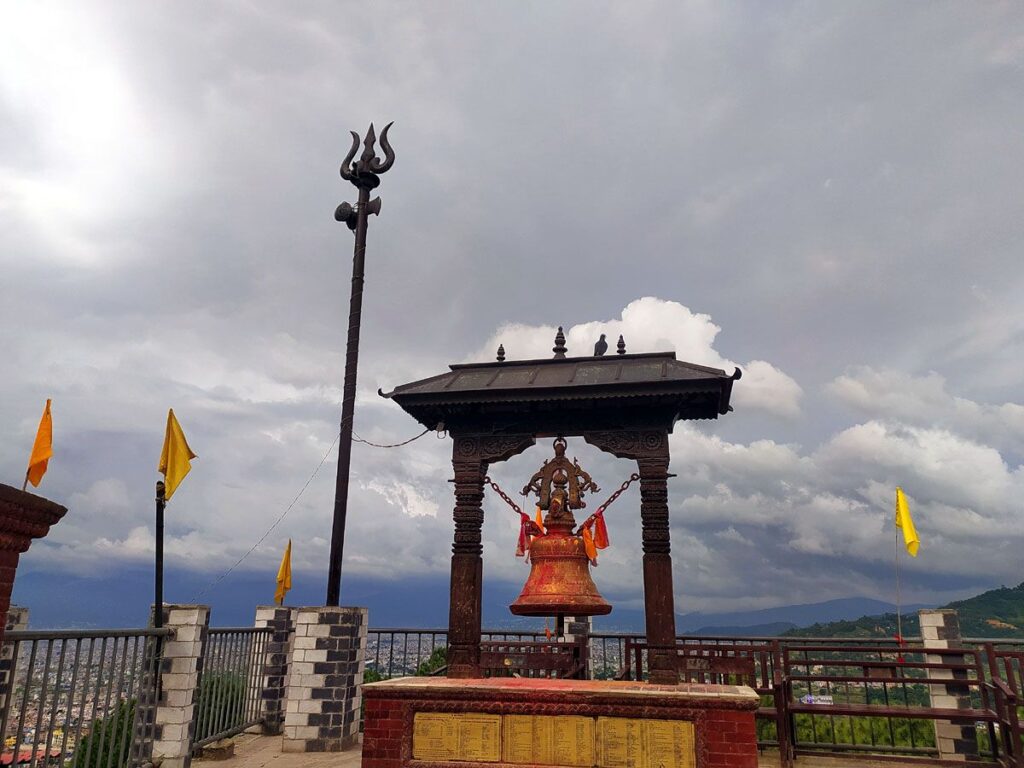
Significance of Santaneshwor Mahadev Temple:
- Hindu Pilgrimage Site: Dedicated to Lord Shiva, the temple is a popular destination for Hindu devotees, particularly on Mondays and Saturdays considered auspicious for worship.
- Beliefs and Blessings: Santaneshwor translates to “boon for having a child.” The temple is especially visited by couples seeking children, with the belief that performing Rudri puja here can bring blessings from Lord Shiva.
- Scenic Location and Cultural Immersion: Situated on a hilltop, the temple offers breathtaking views of the Kathmandu Valley and surrounding villages. Walking to the temple from nearby villages like Chapagaon allows visitors to experience the culture and traditions of the Newar people.
- Historical Significance: While the exact age is unknown, the temple is believed to be ancient, adding to its cultural and religious importance.
Read More>> 64 Chausath Yogini Temple Hirapur Odisha
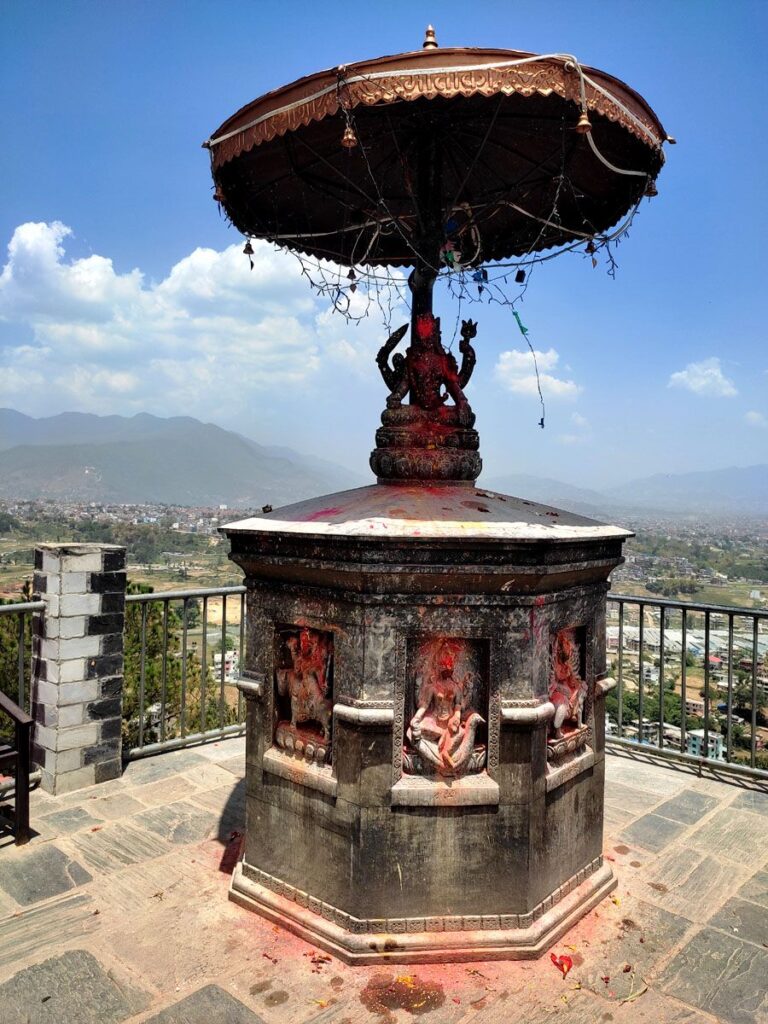
Myths of Santaneshwor Mahadev Temple:
- Sati’s Upper Lip: One popular belief states that the temple is built on the spot where Sati Devi’s upper lip fell when Lord Shiva carried her dead body. This event, according to the myth, imbued the place with a special power to bless devotees with children.
- Lord Shiva’s Blessing: Another myth suggests that Lord Shiva himself bestows the gift of children upon devotees who visit the temple and sincerely pray. This belief draws couples struggling with infertility to the temple, seeking the divine intervention of Lord Shiva.
- Krishna’s Prayer: The famed Hindu text “Shree Swasthani Batra Katha” mentions that Lord Krishna visited the Santaneshwor Mahadev Temple and prayed for progeny. The myth highlights the temple’s significance as a pilgrimage site for those desiring children.
Here are the Complete details of 12 Jyotirlingas:
Santaneshwor Mahadev Temple Architecture:
- Pagoda Style: Many temples in Nepal, including Santaneshwor Mahadev Temple, are built in the pagoda style. This style is characterized by multi-tiered roofs with upturned eaves and intricate wooden carvings. The roofs usually have copper or brass coverings and are supported by wooden columns. The pagoda style is reminiscent of traditional Nepalese architecture.
- Stone and Wood Construction: Hindu temples in Nepal often feature a combination of stone and wood in their construction. Stone is commonly used for the foundation and lower parts of the temple walls, while wood is used for intricate carvings, pillars, and upper parts of the structure.
- Carvings and Decorations: Nepalese temples are renowned for their exquisite wood carvings and intricate designs. These carvings typically depict deities, mythical creatures, floral motifs, and scenes from Hindu mythology. The craftsmanship on these temples is often of very high quality and serves as a testament to the skill of traditional Nepalese artisans.
- Sacred Symbolism: Hindu temples are designed to embody sacred principles and symbolism. For example, the layout of the temple may reflect Hindu cosmology, with the main sanctum representing the center of the universe and subsidiary shrines representing celestial bodies or other important elements of Hindu belief.
- Shikhara (Spire): Many Hindu temples, especially those dedicated to Shiva like Santaneshwor Mahadev Temple, feature a prominent shikhara or spire above the main sanctum. The shikhara is often adorned with intricate carvings and serves as a focal point of the temple’s architecture.
- Mandapa (Pavilion): Hindu temples typically have a mandapa or pavilion in front of the main sanctum. This space is used for rituals, ceremonies, and as a gathering place for devotees. The mandapa may also feature elaborate carvings and decorations.
- Surrounding Structures: In addition to the main temple structure, Hindu temples often have other buildings and structures within the temple complex, such as shrines dedicated to different deities, a priest’s residence, and administrative buildings.
Read More>> Antarvedi Lakshmi Narasimha Swamy Temple

Places to visit near Santaneshwor Mahadev Temple:
- Pashupatinath Temple: One of the most sacred Hindu temples dedicated to Lord Shiva, located on the banks of the Bagmati River. It is a UNESCO World Heritage Site and attracts thousands of pilgrims and tourists every year.
- Boudhanath Stupa: One of the largest stupas in Nepal and a UNESCO World Heritage Site. It is an important pilgrimage site for Buddhists and features intricate mandalas, prayer wheels, and colorful prayer flags.
- Swayambhunath Stupa (Monkey Temple): Another UNESCO World Heritage Site, Swayambhunath is a prominent Buddhist stupa located atop a hill west of Kathmandu Valley. It offers panoramic views of the city and is known for its resident monkeys.
- Kathmandu Durbar Square: A historic square in the heart of Kathmandu city, surrounded by old palaces, temples, and courtyards. It is a UNESCO World Heritage Site and showcases exquisite Newari architecture.
- Patan Durbar Square: Located in the city of Patan (also known as Lalitpur), this square is renowned for its well-preserved ancient architecture, including palaces, temples, and statues. It is also a UNESCO World Heritage Site.
- Bhaktapur Durbar Square: Situated in the ancient city of Bhaktapur, this square is another UNESCO World Heritage Site featuring medieval Newari architecture, temples, and palaces.
- Changu Narayan Temple: An ancient Hindu temple dedicated to Lord Vishnu, located on a hilltop near Bhaktapur. It is one of the oldest temples in Nepal and features intricate stone carvings and sculptures.
- Nagarkot: A hill station located on the outskirts of the Kathmandu Valley, famous for its panoramic views of the Himalayas, including Mount Everest on clear days. It’s a popular destination for sunrise and sunset views.
- Chandragiri Hills: Offering stunning views of the Kathmandu Valley and the Himalayas, Chandragiri Hills is accessible via a cable car ride. It also features a historical temple and a hilltop park.
- Shivapuri Nagarjun National Park: A protected area north of Kathmandu Valley, offering opportunities for hiking, birdwatching, and wildlife spotting. It is home to diverse flora and fauna, including various species of birds and mammals.
Read More>> Vallakottai Murugan Temple
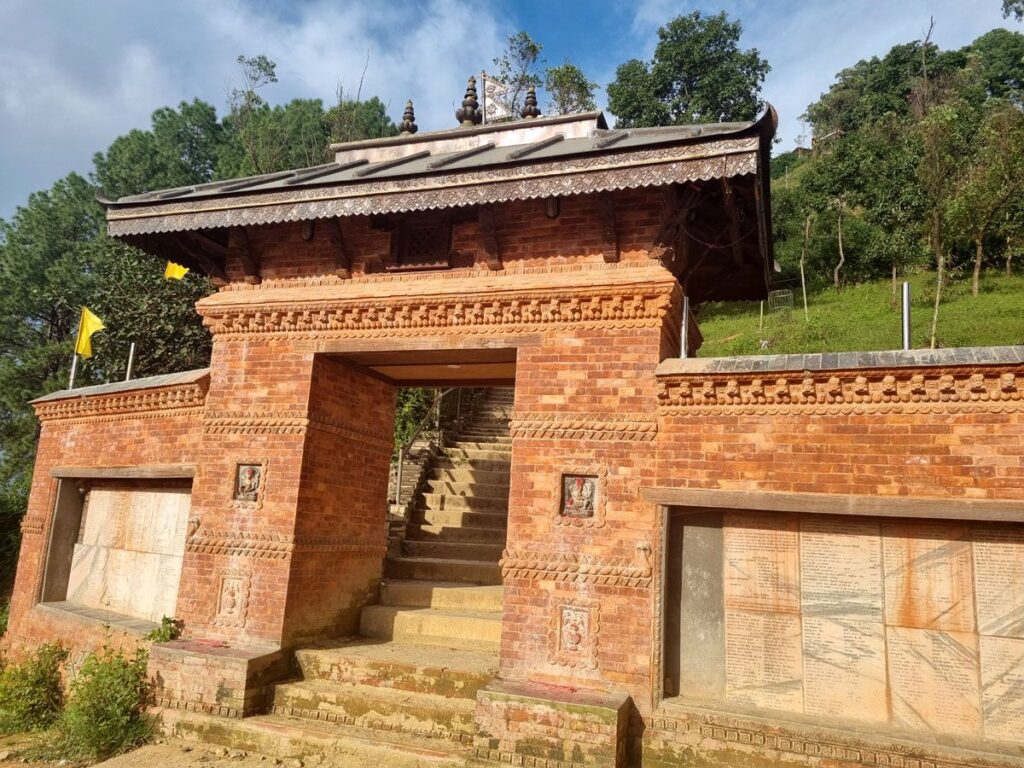
FAQ:
What is the Santaneshwor Mahadev Temple famous for?
The Santaneshwor Mahadev Temple is known as a place where childless couples pray for the blessing of having children. Lord Shiva, the deity enshrined there, is believed to grant wishes for parenthood.
What is the significance of the temple name – Santaneshwor?
“Santan” means offspring or progeny, and “Ishwor” translates to lord. So, Santaneshwor translates to “Lord of Offspring,” reflecting the temple’s importance for those seeking children.
Is there any mention of the temple in Hindu scriptures?
The temple finds mention in the revered Hindu epic “Shree Swasthani Brata Katha,” adding to its religious significance.
Where is the temple located?
The Santaneshwor Mahadev Temple is situated in the Jharuwarasi area of Lalitpur district, Nepal, offering a picturesque view of the Kathmandu Valley.
How can you reach the temple?
The temple is around 11 kilometers from Lagankhel and can be reached by car in about an hour. It’s also accessible by public transport.
What is the architectural style of the temple?
The Santaneshwor Mahadev Temple follows the Nepalese Pagoda architectural style, characterized by tiered roofs that ascend to a pinnacle.
Are there any festivals or special events celebrated at Santaneshwor Mahadev Temple?
Yes, like many Hindu temples, Santaneshwor Mahadev Temple celebrates various festivals and religious events throughout the year. These may include Shivaratri, Teej, and other occasions dedicated to Lord Shiva and Hindu deities.
Can non-Hindus visit Santaneshwor Mahadev Temple?
Yes, non-Hindus are generally allowed to visit Santaneshwor Mahadev Temple. However, visitors are expected to respect the religious customs and practices observed at the temple.
How to reach Santaneshwor Mahadev Temple:
- By Air: If you’re traveling from outside Nepal, you can fly into Tribhuvan International Airport (TIA) in Kathmandu, which is the nearest international airport. From there, you can take a taxi or arrange for transportation to the Santaneshwor Mahadev Temple.
- By Road: If you’re already in Nepal, you can reach Kathmandu by bus or private vehicle from various cities and towns across the country. Once you’re in Kathmandu, you can take a taxi, local bus, or hire a private vehicle to reach the temple.
- From Kathmandu: The temple is located in the Lalitpur district of the Kathmandu Valley. From central Kathmandu, you can head south towards Lalitpur. The specific route may vary depending on your starting point within Kathmandu. You can use GPS navigation or ask locals for directions.
- Local Transport: Within Lalitpur, you can use local buses, microbuses, or taxis to reach the Santaneshwor Mahadev Temple. You may need to ask for directions once you’re in Lalitpur, as the temple may not be widely known by its name, but locals should be able to guide you.

